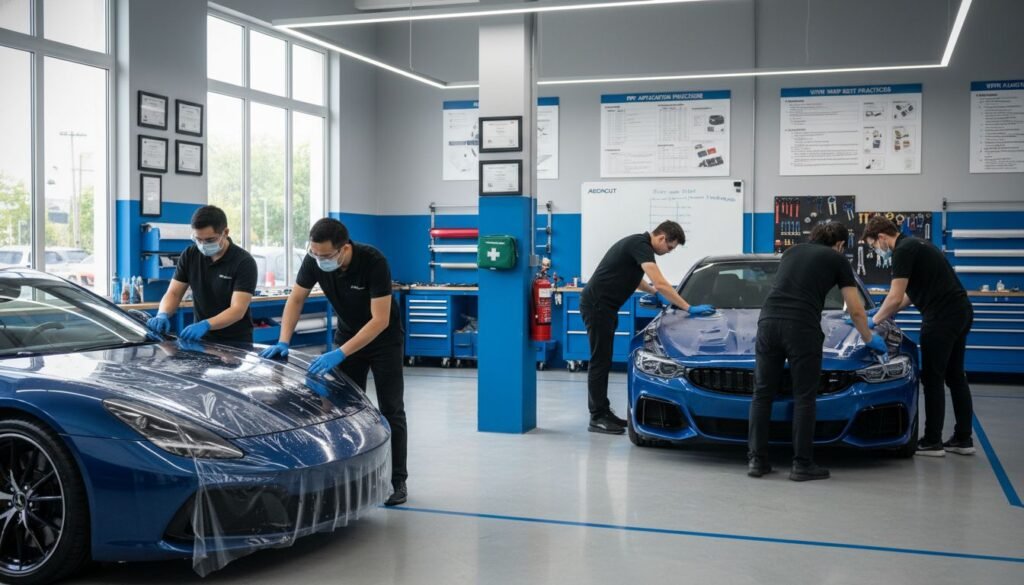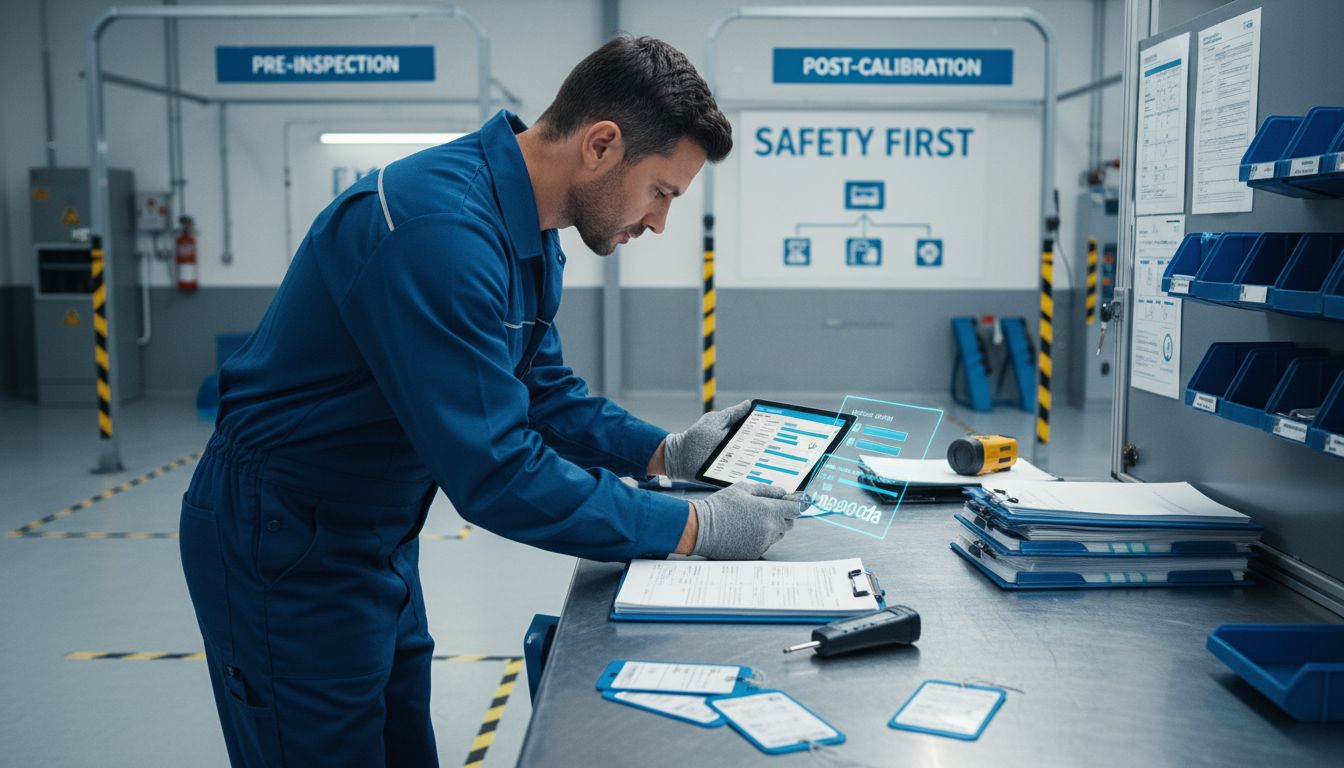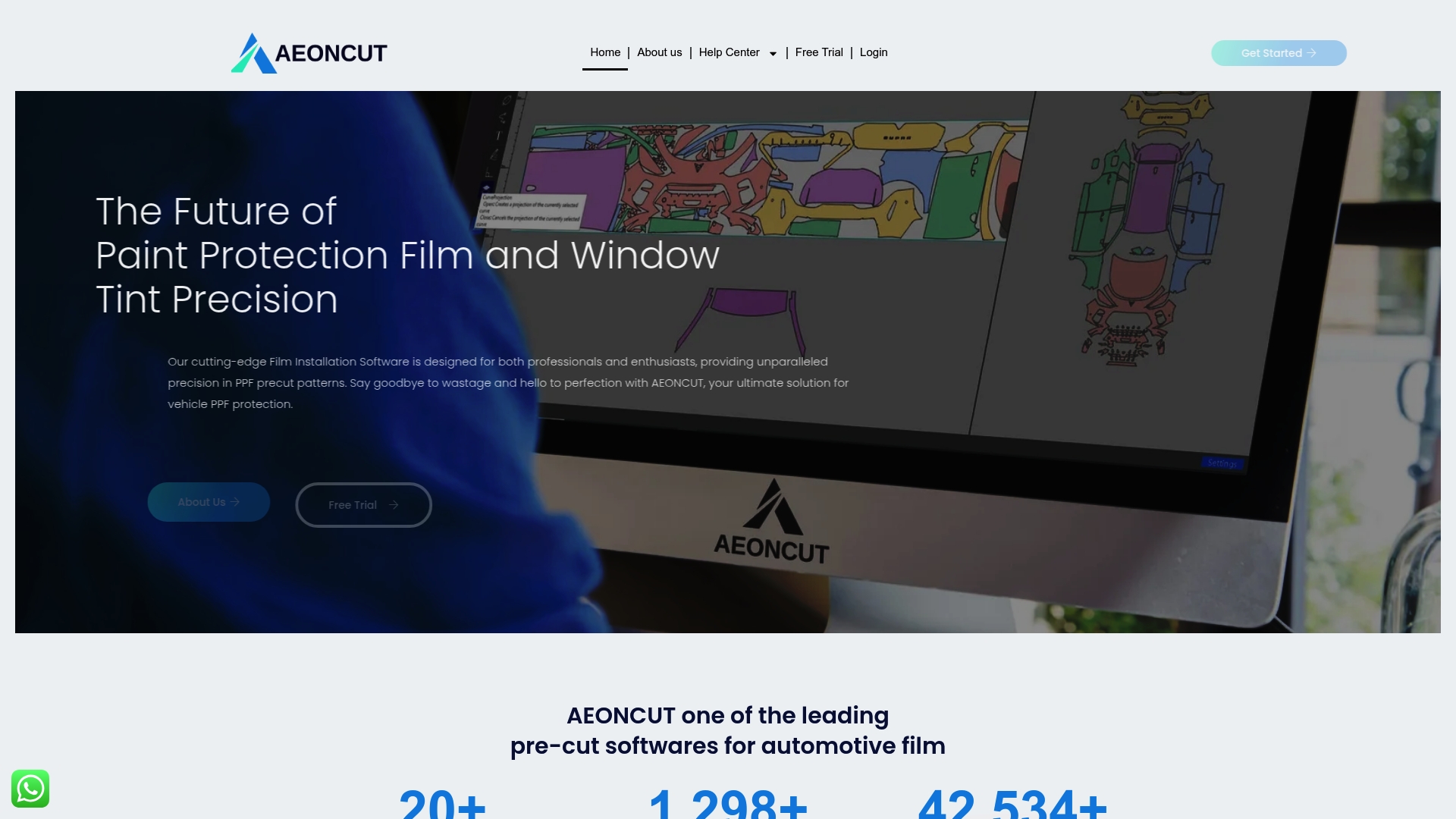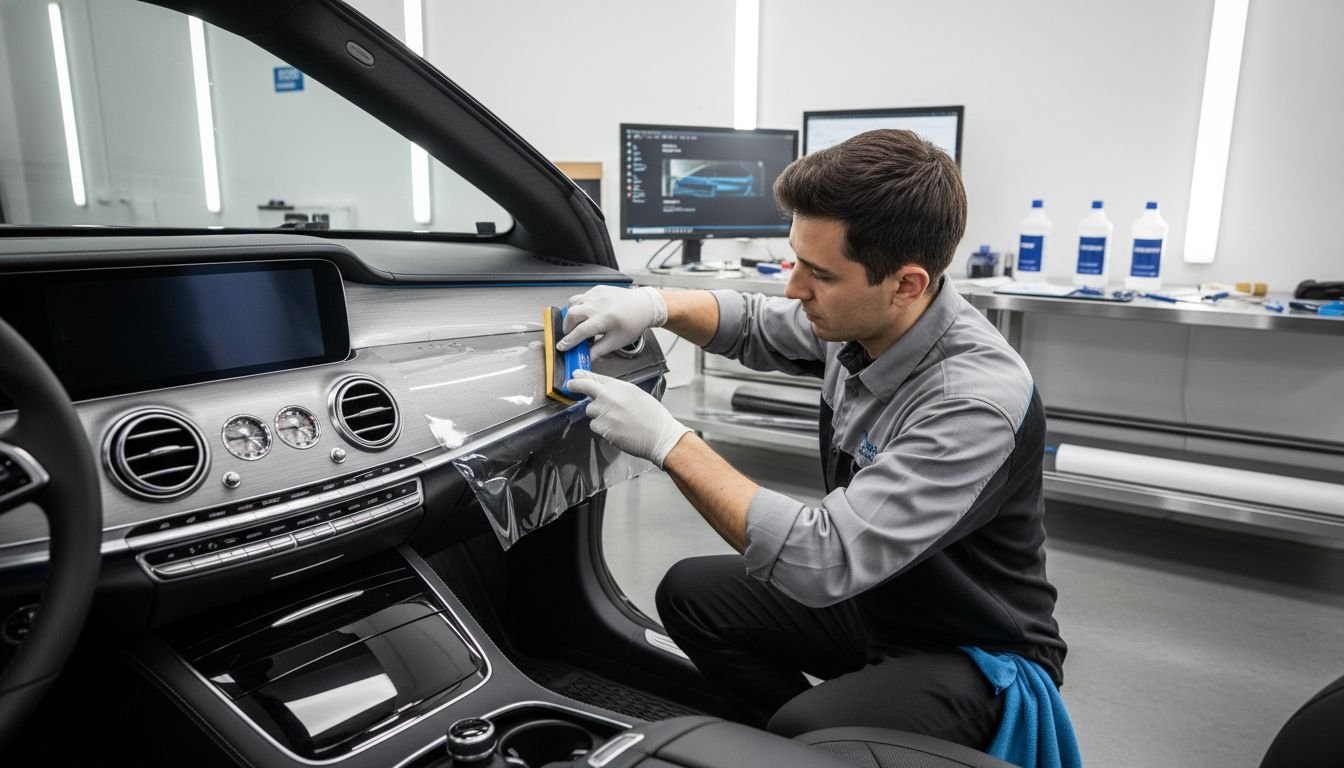
Did you know that failing to follow industry safety standards can lead to legal penalties and even loss of business licenses? These rules are not just bureaucratic hurdles. They protect employees, keep installations consistent, and help businesses avoid costly mistakes. Understanding how safety protocols work across automotive customisation ensures workers stay safe, products meet strict requirements, and companies maintain trusted reputations in a fast-paced industry.
Table of Contents
- Defining Industry Safety Standards And Concepts
- Types Of Safety Standards In Automotive Sector
- Key Components And Compliance Requirements
- Global Regulatory Bodies And Certification Processes
- Risks Of Non-Compliance And Best Practices
Key Takeaways
| Point | Details |
|---|---|
| Dynamic Safety Standards | Industry safety standards for automotive customization are evolving frameworks requiring continuous compliance and updates to reflect technological advancements and regulatory changes. |
| Key Automotive Standards | Major standards like IATF 16949, ISO 9001, ISO 14001, and ISO 45001 are essential for ensuring quality management, environmental responsibility, and occupational safety within the automotive sector. |
| Compliance as Culture | Successful compliance involves not just meeting minimum requirements but fostering a culture of safety and continuous improvement to protect workers and enhance business reputation. |
| Risk of Non-Compliance | Non-compliance can lead to legal liabilities, reputational harm, and financial consequences, underscoring the importance of adhering to established safety protocols. |
Defining Industry Safety Standards and Concepts
Industry safety standards represent structured professional guidelines that ensure reliability, operational efficiency, and systematic risk management across automotive customisation sectors. According to research from arxiv.org, these standards provide comprehensive frameworks for designing, implementing, and maintaining safety-related systems with an emphasis on continual improvement and interoperability.
For vehicle wrap and paint protection film (PPF) installers, safety standards encompass multiple critical dimensions. These include personal protective equipment protocols, material handling procedures, workplace environmental controls, and technical performance specifications. The primary objectives centre around protecting worker health, ensuring consistent product quality, and minimising potential risks during installation processes.
Key components of industry safety standards typically involve:
- Rigorous training requirements
- Documented procedural guidelines
- Equipment maintenance protocols
- Quality control checkpoints
- Risk assessment methodologies
Professional installers must understand that safety standards are not static documents but dynamic frameworks requiring regular updates. They reflect evolving technological capabilities, emerging industry best practices, and increasing regulatory expectations. By consistently adhering to these standards, businesses demonstrate commitment to professional excellence and client trust.
Types of Safety Standards in Automotive Sector
The automotive sector encompasses multiple sophisticated safety standards that ensure quality, reliability, and operational excellence. According to research from NQA, the industry adheres to several critical certification frameworks that collectively guarantee vehicle and workplace safety across different domains.
Four primary safety standards dominate the automotive landscape, each addressing specific operational aspects. IATF 16949 focuses on quality management systems specific to automotive production, establishing rigorous guidelines for manufacturing processes. ISO 9001 provides comprehensive quality assurance protocols, ensuring consistent product standards and continuous improvement methodologies. Meanwhile, ISO 14001 concentrates on environmental management, promoting sustainable practices and reducing ecological impact within automotive operations.
Key safety standards in the automotive sector include:
Here’s a summary of the key automotive safety standards and their primary focus:
| Standard | Main Focus | Typical Application |
|---|---|---|
| IATF 16949 | Automotive quality management | Manufacturing processes |
| ISO 9001 | Quality assurance | Product consistency |
| ISO 14001 | Environmental management | Sustainable operations |
| ISO 45001 | Occupational health and safety | Worker protection |
- IATF 16949: Quality management for automotive production
- ISO 9001: Quality assurance and continuous improvement
- ISO 14001: Environmental management protocols
- ISO 45001: Occupational health and safety guidelines
The final critical standard, ISO 45001, addresses occupational health and safety, creating comprehensive frameworks to protect workers and minimise workplace risks. These standards are not merely theoretical documents but dynamic frameworks that evolve with technological advancements and changing industry requirements. Professional installers and businesses who consistently implement and update these standards demonstrate commitment to excellence, safety, and professional integrity.
Key Components and Compliance Requirements
Industry safety standards for automotive customisation professionals are built upon sophisticated risk assessment methodologies that systematically evaluate potential hazards and establish comprehensive compliance frameworks. According to research from Wikipedia, these standards incorporate critical components designed to minimise operational risks and ensure systematic safety management across vehicle modification processes.
The core of compliance requirements centers on Automotive Safety Integrity Levels (ASILs), which provide a structured approach to classifying and managing potential safety risks. These levels range from ASIL A (lowest risk) to ASIL D (highest risk), enabling installers to implement proportional safety measures based on specific operational contexts. Professional PPF and window tint installers must meticulously document risk evaluation processes, demonstrating a proactive approach to identifying and mitigating potential workplace and product-related hazards.
Key compliance components for automotive safety standards include:
- Comprehensive risk identification protocols
- Systematic documentation of safety evaluation processes
- Clear performance and quality benchmarks
- Regular safety audits and reviews
- Continuous improvement mechanisms
- Detailed training and certification requirements
Successful compliance is not merely about meeting minimum standards but establishing a culture of safety and precision. Professional installers must view these requirements as dynamic frameworks that evolve with technological advancements and industry best practices. By embracing a holistic approach to safety standards, businesses can protect their workforce, maintain high-quality service delivery, and build trust with clients through demonstrable commitment to professional excellence.

Global Regulatory Bodies and Certification Processes
The automotive industry’s safety standards are meticulously governed by global regulatory bodies that establish comprehensive frameworks for quality, safety, and performance. According to research from NQA, organizations like the International Organization for Standardization (ISO) and the International Automotive Task Force (IATF) play pivotal roles in developing and maintaining these critical industry standards.
Certification processes represent complex, multi-stage evaluations designed to ensure organisations meet stringent professional requirements. These rigorous assessments involve detailed audits that examine an organisation’s entire operational ecosystem, including documentation practices, quality management systems, safety protocols, and continuous improvement mechanisms. Professional installers must demonstrate not just compliance, but a proactive commitment to maintaining the highest standards of professional practice.
Key aspects of global regulatory certification include:
- Comprehensive documentation review
- On-site operational audits
- Performance and quality benchmarking
- Systematic risk assessment protocols
- Ongoing compliance monitoring
- Regular recertification requirements
The certification journey is not a one-time achievement but a continuous process of professional development. For vehicle wrap, PPF, and window tint professionals, these global standards represent more than bureaucratic requirements—they are fundamental frameworks that ensure client safety, product quality, and industry-wide credibility. Successful navigation of these certification processes distinguishes top-tier professionals who are committed to excellence and continuous improvement.
Risks of Non-Compliance and Best Practices
Non-compliance with industry safety standards poses significant operational risks that extend far beyond simple regulatory penalties. According to research from BSI Group, automotive customisation businesses face potential legal liabilities, reputational damage, and substantial financial consequences when failing to adhere to established safety protocols.
The consequences of non-compliance can be categorically devastating for professional installers. Legal ramifications may include substantial financial penalties, potential business licence revocations, and personal liability for workplace incidents. Moreover, insurance providers often refuse coverage for businesses that do not maintain rigorous safety standard compliance, creating additional financial vulnerability for organisations that neglect their regulatory responsibilities.
Critical best practices for maintaining compliance include:
- Implementing comprehensive staff training programmes
- Conducting regular internal safety audits
- Maintaining meticulous documentation
- Investing in ongoing professional development
- Establishing clear safety communication channels
- Proactively updating safety management systems
Professional installers must view compliance not as a burdensome requirement but as a strategic investment in their business’s long-term sustainability and reputation. By developing a proactive approach to safety standards, organisations can transform potential regulatory challenges into opportunities for demonstrating professional excellence, client trust, and operational integrity. The most successful businesses understand that safety compliance is fundamentally about protecting people, processes, and professional reputation.
Enhance Safety Compliance with Precision Cutting Technology
Navigating the complex industry safety standards for automotive installers requires not just knowledge but reliable tools that support risk mitigation and accuracy. This article highlights the importance of rigorous training, documented procedures, and quality benchmarks to reduce operational risks. At AEONCUT, we understand these challenges and offer a cutting software solution designed specifically for professionals committed to excellence in paint protection film and window tint installation.

Discover how AEONCUT’s advanced features like AI-driven auto-nesting and extensive pre-cut pattern libraries help installers maintain compliance by improving precision and reducing material waste. Don’t let non-compliance risks jeopardise your reputation or legal standing. Take the step now to elevate your installation process with a tool built for safety, quality, and efficiency. Explore our subscription plans and resources at AEONCUT to experience the difference precision cutting technology can make for your business.
Frequently Asked Questions
What are industry safety standards in automotive customization?
Industry safety standards in automotive customization are structured guidelines that ensure operational efficiency, risk management, and worker safety. They include protocols related to equipment use, material handling, personal protective equipment, and compliance with performance specifications.
Why are compliance requirements important for automotive installers?
Compliance requirements are crucial for automotive installers as they help minimize operational risks, ensure workplace safety, and maintain product quality. Following these guidelines protects both workers and clients, ultimately fostering trust and enhancing a business’s reputation.
What are the key components of industry safety standards for installers?
Key components of industry safety standards include rigorous training requirements, documented procedural guidelines, equipment maintenance protocols, quality control checkpoints, and risk assessment methodologies designed to protect workers and ensure consistent service delivery.
How can automotive customization businesses ensure ongoing compliance with safety standards?
To ensure ongoing compliance, businesses can implement comprehensive staff training, conduct regular internal audits, maintain meticulous documentation, invest in professional development, and establish clear communication channels regarding safety protocols.
Recommended
- How to Train New Installers Using Aeoncut Tutorials Effectively – AEONCUT PPF Pre-cut Cutting software
- How to Train New Installers Using Aeoncut Tutorials Effectively – AEONCUT PPF Pre-cut Cutting software
- How to Train New Installers Using Aeoncut Tutorials Effectively – AEONCUT PPF Pre-cut Cutting software
- Heat Shrinking Window Tint: 2025 Guide for Installers – AEONCUT PPF Pre-cut Cutting software
- Gestione del Rischio Caldo e Radiazione Solare: Obblighi Normativi e Misure Pratiche per l’Estate – Sikuro




